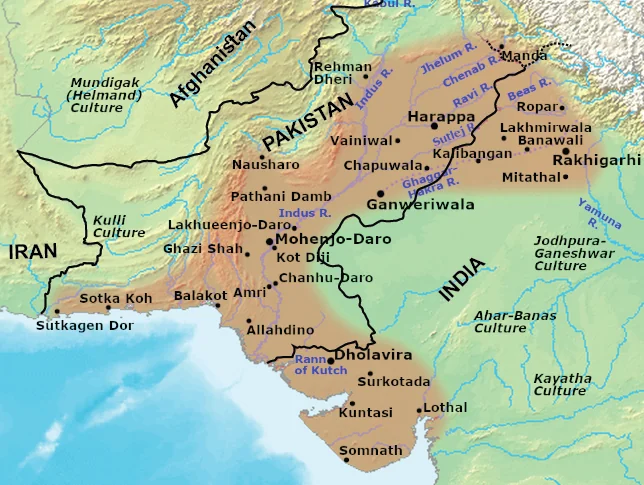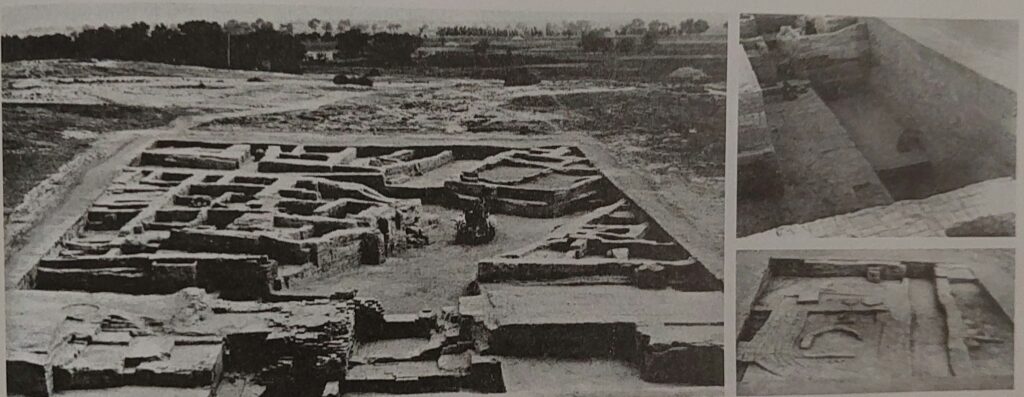Indian history is enriched with several different arts and cultural elements. The Harappans were the first in the Indian sub-continent who develop their architecture in a well-planned manner. The Indus Valley Civilization or Sindhu-Saraswati Civilization or Harappan civilization emerged on the banks of the river Indus and its tributaries during the second half of the 3rd millennium BCE. It was spread across the parts of the North-western and western Indian regions.
The Harappan civilization is well-known for its planned urbanization, first in the Indian subcontinent. The planned network of roads, drainage systems, and houses indicates the level of engineering skills of the Harappan peoples.
Also Read : Marathas Movement – The Rise
Arts in India – Introduction and Classification
Marathas Movement – Nature and Character
Important Sites of Indus Valley Civilization
There are more than 1500 sites of the Harappan age discovered so far. All these sites provide archeological insights of that age. There are number of important findings discovered from many Harappan sites. For examples, Harappa which is in the modern-day Pakistan have granaries, goddess figure, mortar, dice, etc. The site of Mohenjo-Daro which is also in Pakistan, have citadel, the great bath, post-cremation burial etc.

Dholavira in Gujarat have giant water reservoir, unique water harnessing system, stadium, dams etc. The site of Lothal in Gujarat has naval trade, dockyard, fire alters etc. Rakhigarhi in Haryana, which is considered as largest Indus Valley civilization site, have granary, cemetery, terracotta bricks etc. The sites of Ropar, Kalibangan, Banawali, Mehrgarh etc. all sites also have number of important remains of that age.
Architecture During Harappan Period
The remains at the sites of civilization reveal a remarkable sense of town planning. The towns of Harappa and Mohenjo-Daro were laid out in a rectangular grid pattern. The roads of these towns typically cut each other at a right angle and ran in a north-south direction. These roads divided the city into several blocks and there were small lanes to connect these individual houses.
There were mainly three types of buildings; dwelling houses, public buildings and public baths. They used burnt mud brick for construction which were joined together using gypsum mortar. The city was typically divided in two parts; upraised citadel and lower-part of city. The upraised citadel was situated in the western part of the city which have granaries, administrative buildings, prayer halls, residences of rulers and aristocrats, courtyards.

There were no large monumental buildings in the Indus valley civilization unlike the civilization of Egypt and Mesopotamian. But the granaries built in these cities with strategic air ducts and raised platforms which helped in protecting the storage of grains form pests. The cities of Harappan have public baths which were surrounded by the galleries and rooms. The great Bath discovered at Mohenjo-Daro is master piece as there is still no cracks in the bath after so many years.

The lower-part of the city have small rooms which might have been used by working class peoples. Some of these houses also have double-storied building, private bathrooms, proper ventilation. The most striking feature of these cities was their drainage system. There were small drains in every house which were connected to large drain system of the city. These drains were cleaned regularly. There were cesspits placed at regular intervals.
The peoples of IVC placed significant focus in their hygiene. The presence of wells was there in some cities. Hence, Harappan build the first urbanized civilization in the Indian sub-continent with many innovative systems that eventually set benchmark for future generations.

Pingback: Sculptures During Harapan Civilization - historylover.in
Pingback: Art During the Post-Mauryan Period - historylover.in
Pingback: Temple Architecture in Northern India - historylover.in